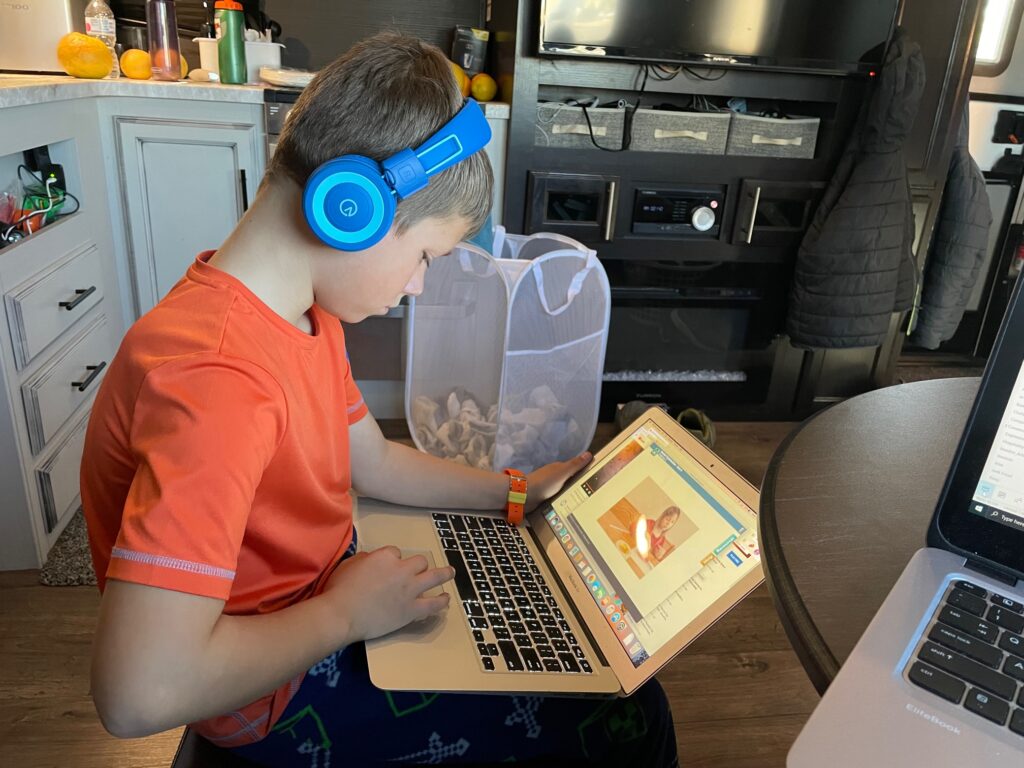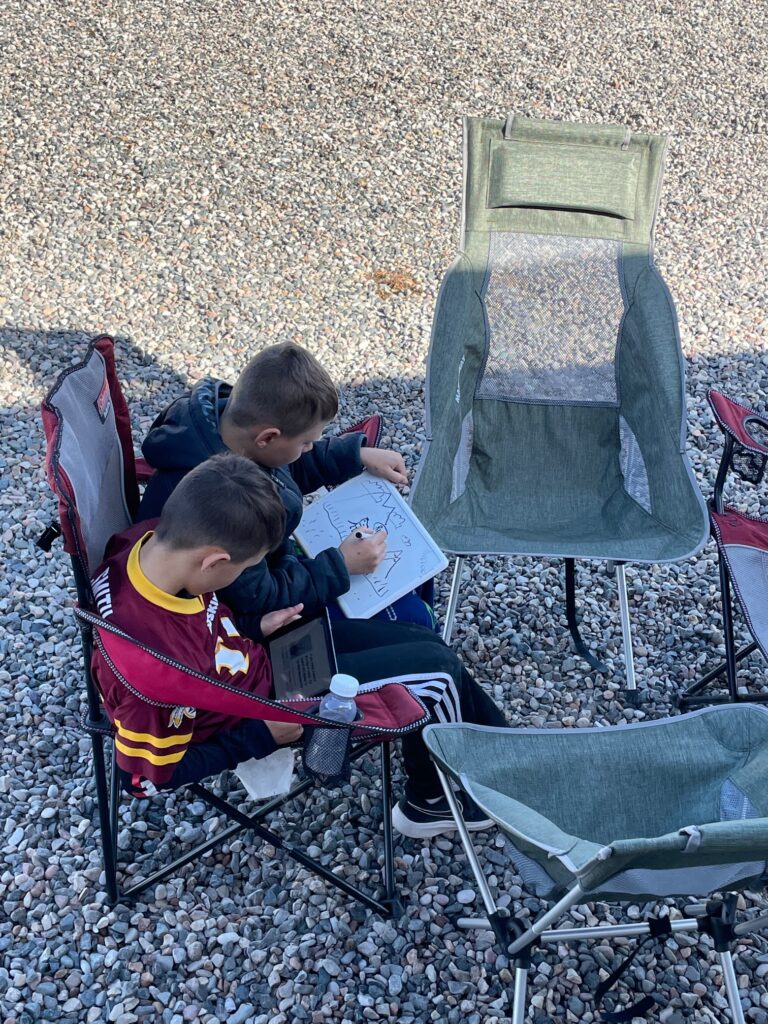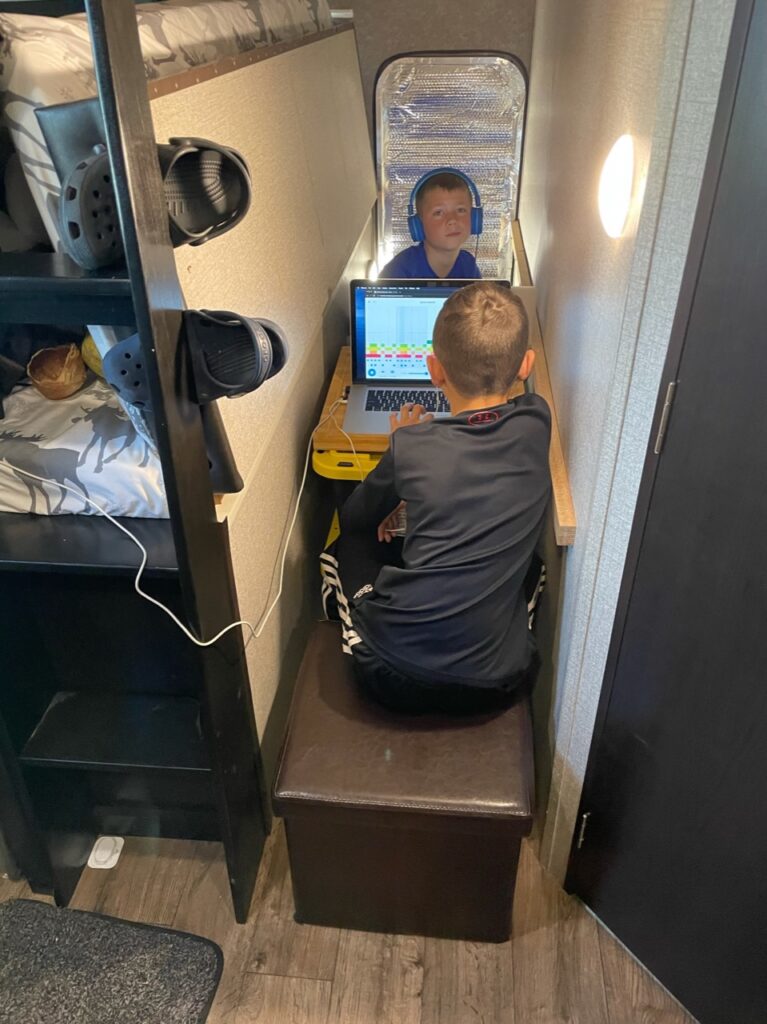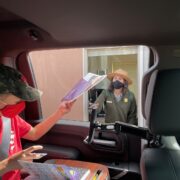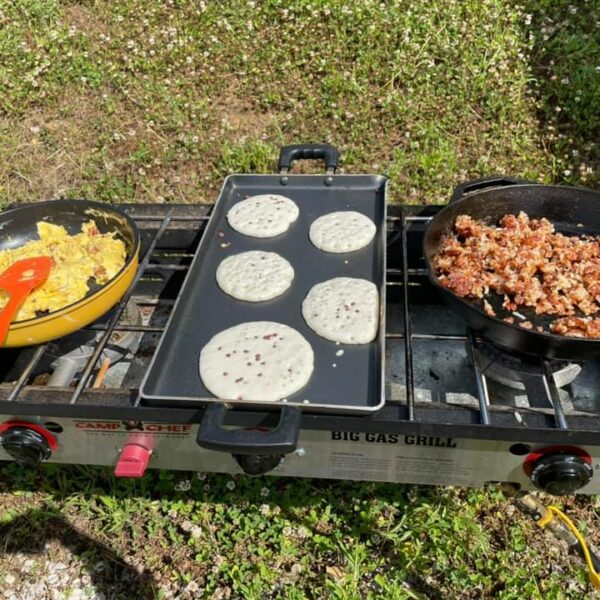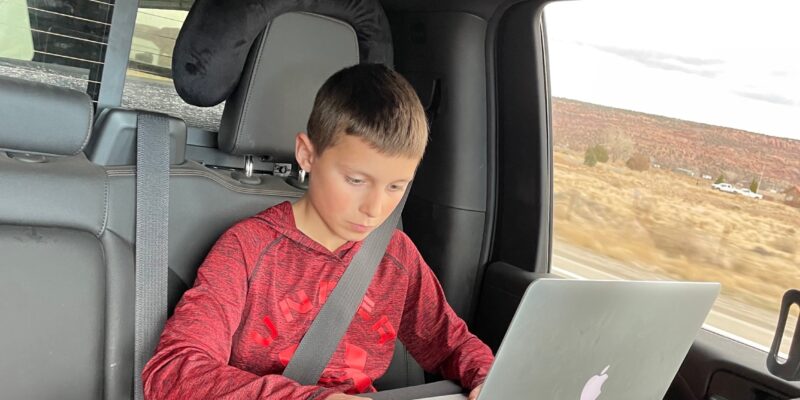
Homeschooling from the RV (RoadSchooling)
When COVID began and the kids were required to complete the rest of their school year in a virtual online environment, we learned a lot about what worked and what didn’t work for our kids and our family. We made the decision that they would be homeschooled the next year, even before we decided to buy an RV and begin traveling.
As newbies to the homeschool world, we had quite a learning curve to figure out what program we were going to use and how we were going to lead them through their courses while we both were working full time. We had a lot of pre-conceived notions about what homeschooling entailed, but we broke down those stereotypes and figured out what it would mean for our family.
We looked into several programs and even had the boys do a week-long trial, during summer (yep, summer school) for one we liked, but ultimately decided against. Every family has different needs, but for us, here are some of the things that were important to us:
- We knew we wanted a program that would offer multiple subjects (math, language arts, science, social studies) and topics rather than having different programs for different subjects.
- We wanted the program to progress automatically as the kids mastered each concept. We needed them to know what they had to do next rather than telling them their next task.
- We wanted the course material available online rather than notebooks/books since we didn’t have a lot of space and we would be moving around a lot.
- We needed a program that would allow us parents to easily see the progress and know where the kids were doing well and where they were struggling. We needed to know that they were on track.
- We needed to be sure the curriculum was aligned to the work they would be doing in the traditional classroom, as we expected they would be returning to school the next year (this meant things like Common Core Math).
- We knew we would have to share a portfolio with the county, so we wanted to make sure we could track their progress and share a report card when needed.
- We expected that we would have to supplement education for PE, Health, and Art, but a program that offered anything in those categories would be a bonus.
Ultimately, we decided on Acellus Learning. It was easy for the kids to see what they needed to complete for the day/week, it had a great parent portal for us to track progress, it contained all four major subjects (math, science, language arts, and social studies), and they offer additional electives that our kids really enjoyed learning (engineering, coding, ecology, social-emotional learning). Below is a sample of the main page of our portfolio review, as it included attendance reports, progress reports, grades by subject, and left an area for me to include notes.
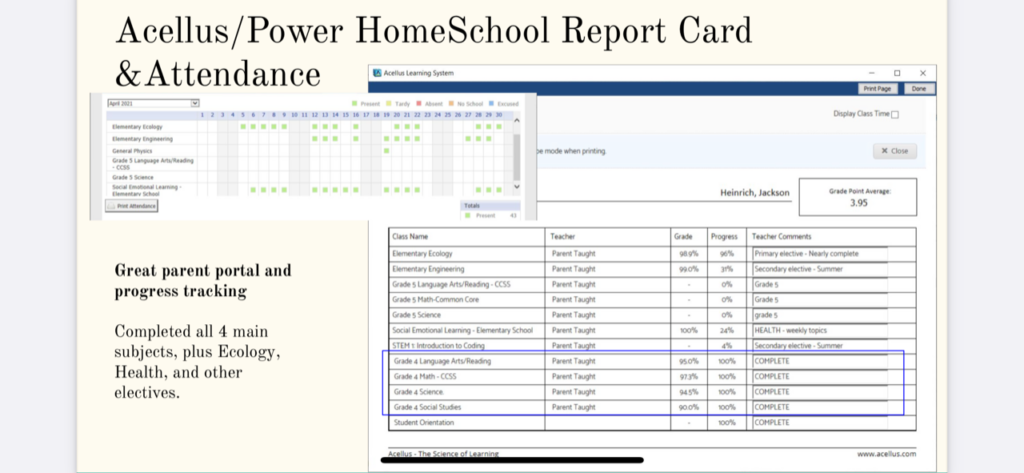
We were very happy with our decision, but for transparency, there could be some down-sides with this program you should be aware of.
- There’s a monthly subscription fee. It’s minimal (maybe $25-30/month per child), but it adds up if you have multiple children. With the subscription, you get up to 7 subjects at any time, plus social-emotional learning as a “free” add on course option.
- It requires kids to have access to the internet to complete their work. The program does not offer any downloadable content or offline work. It meant they really couldn’t do work in the truck while we were driving or without strong internet connections. Because we were working full time, we pretty much always had access to Internet, so it wasn’t a problem for us, but it would have been convenient to be able to download videos for offline use.
- The parent portal does not allow you to look ahead at the content your child is going to be learning. You can see the topics within each unit ahead, but you cannot see the specific videos, questions, or content at all. At times, I was curious about what was coming up, but ultimately we were satisfied with the content.
- In the few instances when the kids did not master a subject with 80% or better, it requires them to rewatch videos before taking the assessment again. This seems logical to me as a parent, but it drove my kids crazy. I believe it encouraged them to try harder so they didn’t have to repeat anything.
Homeschool can look different for everyone, and that’s perfectly acceptable. For us, we wanted to stay a little more traditional, as we were planning to send the kids back to public school after a year away. If you are not planning to go to a traditional school, you can be more flexible with what you’re learning, how you’re learning it, and not needing to document everything along the way.
Regardless of your homeschool plan, you’ll want to encourage your kiddos to read and write as much as possible. We had them documenting (drawing and journaling) all of our stops, but they also did other writing about topics that interested them. It’s amazing how creative they are when they get the chance. We had a ton of pencils (because somehow they’re always getting lost), paper, colored-pencils, pencil sharpener, whiteboard and Expo markers as our staples. The whiteboard was great for math problems, spelling words, and simple art projects.
We travel in a 32′ travel trailer, and we don’t have a separate dinette from our couch, and we don’t have a bunkhouse for the kids. If we had our way, we would have given them some dedicated space to relax and also to do their work. Typically we had one at the table and one on our bed. Occasionally, they would work outside. Once, they even folded up the bunk bed and worked in the storage hall beneath the bed. Unfortunately, Griffin was trapped so this didn’t become a regular workspace.
Regardless of what you decide, try to make it a fun experience and bring in the activities and locations of your travels to your ‘schooling’.


